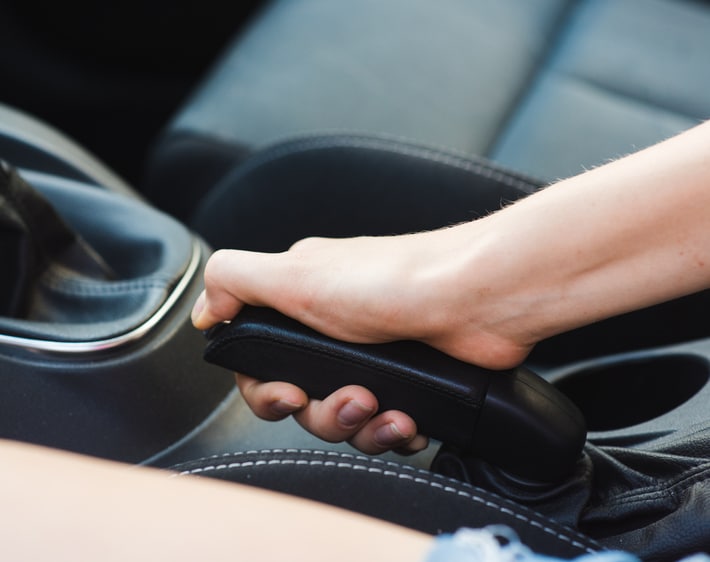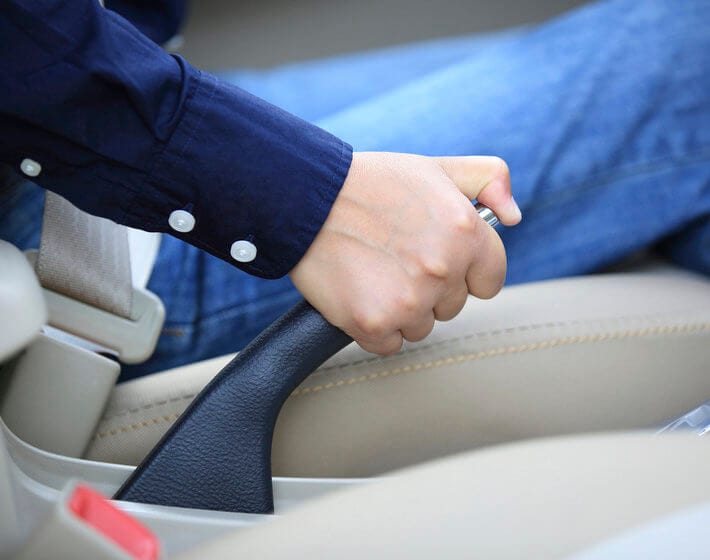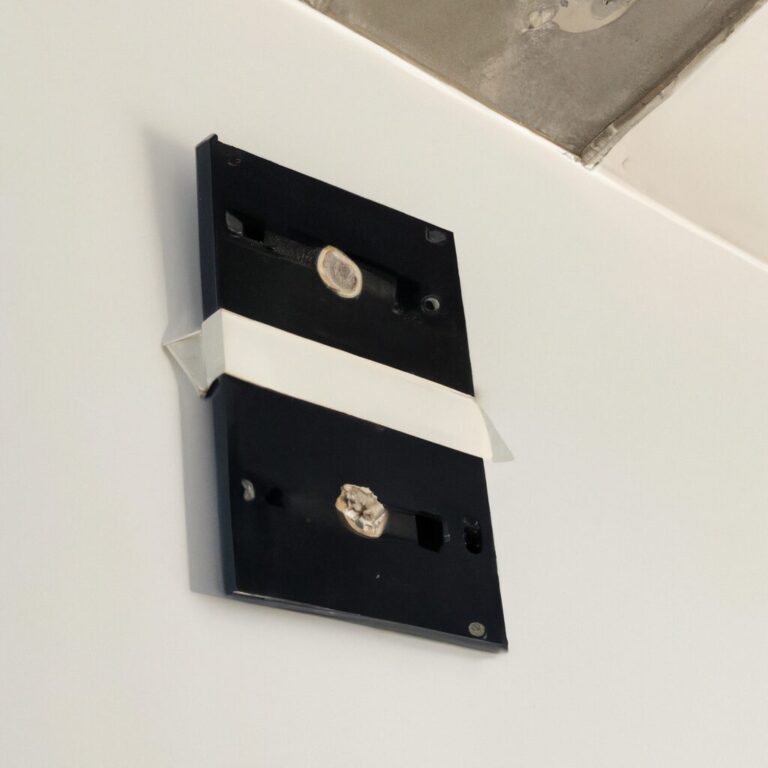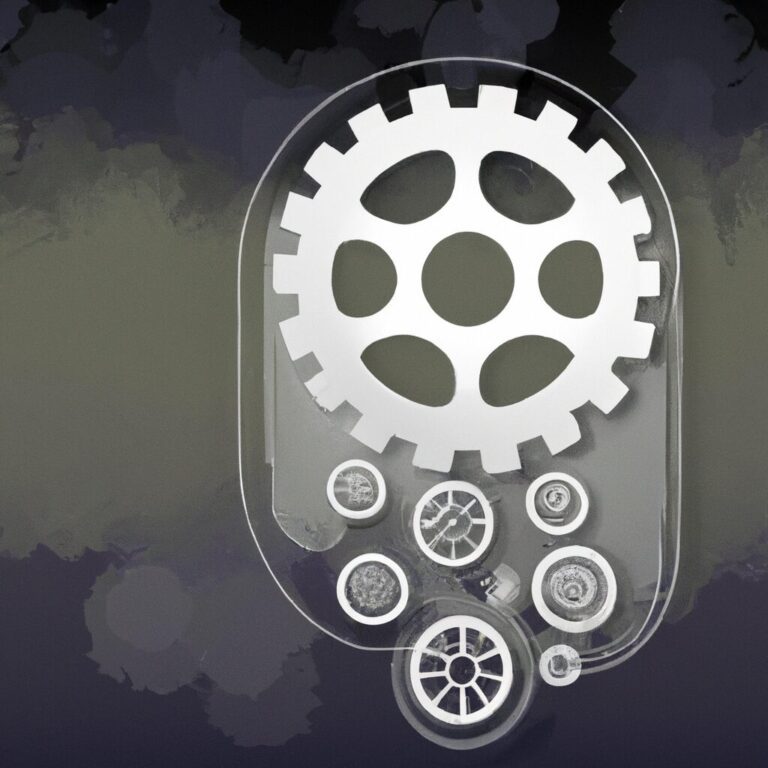How to Use an Emergency Brake
To use an emergency brake, pull the lever or press the pedal in a sudden stop. Using the emergency brake in a situation where immediate stopping power is needed can prevent accidents and ensure safety on the road.
Modern vehicles are equipped with emergency brakes that provide an extra layer of security in case of brake failure or parking on an incline. Knowing how to properly engage the emergency brake can be a lifesaving skill for drivers. We will discuss the importance of emergency brakes, how to use them effectively, and when to utilize them in various driving scenarios.
Understanding the proper techniques for using an emergency brake can help drivers navigate challenging situations and avoid potential hazards on the road.
Understanding Emergency Brakes
Learn how to effectively use your emergency brake in case of an emergency. By engaging the emergency brake correctly, you can secure your vehicle on inclines, prevent it from rolling, and add an extra layer of safety when parking. Mastering the proper technique for applying the emergency brake is essential for every driver.
Understanding Emergency Brakes Emergency brakes, also known as handbrakes or parking brakes, are an essential component of every vehicle. These brakes are designed to keep your car stationary when parked or to provide an additional safety measure in emergency situations. In this section, we will delve deeper into the concept of emergency brakes, discussing what they are and the various types available.What Is An Emergency Brake?
An emergency brake is a secondary braking system that is manually operated by the driver. It acts as a backup to the primary braking system and can be engaged independently to stop the vehicle from moving. Unlike the primary brakes, the emergency brake is hydraulic or cable operated, which means it does not rely on the power of the engine to function. This makes it an effective option to bring the vehicle to a halt during emergencies, even if the engine fails.Types Of Emergency Brakes
Emergency brakes come in different types, depending on the design and mechanism used. Let’s take a closer look at the two most common types: 1. Mechanical Emergency Brake: This traditional type of emergency brake consists of a lever or pedal connected to cables. When the lever or pedal is engaged, the cables tighten, leading to the brake shoes or pads being pressed against the drum or rotor. This friction slows down or stops the wheels’ rotation, preventing the vehicle from moving. Mechanical emergency brakes are commonly found in older models of cars and some modern vehicles. 2. Electric Emergency Brake: Unlike the mechanical emergency brake, the electric emergency brake operates electronically. It uses an electric motor to engage and disengage the brake system. When the driver activates the electric emergency brake, the motor applies pressure to the brake pads, similar to how the hydraulic braking system functions. Electric emergency brakes are commonly found in newer car models, especially those equipped with advanced technology. Both mechanical and electric emergency brakes serve the same purpose of keeping your vehicle stationary. However, the mechanism of the electric emergency brake offers convenience as it can be engaged or disengaged with the press of a button or switch, eliminating the need for a physical lever or pedal. In conclusion, understanding emergency brakes is crucial to ensure your safety and the safety of others. Whether it’s an older car with a mechanical emergency brake or a newer model with an electric emergency brake, it’s essential to know how to use it effectively in emergency situations and when parking your vehicle. Next, we will explore the step-by-step process of using the emergency brake correctly.
Credit: m.youtube.com
When To Use An Emergency Brake
In Case Of Brake Failure
In case your brakes fail, engage the emergency brake to safely stop your vehicle.
Parking On Inclines
Always use the emergency brake when parking on inclines to prevent your car from rolling.
How To Engage The Emergency Brake
In emergency situations, knowing how to engage your emergency brake can prevent accidents and ensure safety. Follow the steps below to properly engage the emergency brake.
Step-by-step Process
- Park your vehicle in a safe location.
- Locate the emergency brake lever or pedal.
- Pull the lever up or depress the pedal firmly.
- Release the brake slowly to ensure it is engaged.
Common Mistakes To Avoid
- Forgetting to engage the emergency brake in a parked car.
- Engaging the emergency brake while driving.
- Not checking if the brake is fully engaged.
Emergency Brake Maintenance
Emergency brake maintenance is essential to ensure your safety on the road. Learn how to effectively use your emergency brake with these simple steps.
Proper maintenance of your emergency brake is crucial for ensuring its effectiveness and your safety on the road. Regular inspections and replacing brake cables when necessary are key aspects of emergency brake maintenance. Let’s explore these in detail.
Regular Inspection
Regularly inspecting your emergency brake system is essential for identifying and addressing any potential issues or malfunctions. Here’s a simple checklist to help you perform a thorough inspection:
- Make sure your vehicle is parked on a flat surface and the engine is off.
- Engage the emergency brake and ensure that it securely holds the vehicle in place.
- Inspect the emergency brake pedal or lever for any signs of damage or wear.
- Check the emergency brake cables for any fraying, corrosion, or excessive slack.
- Examine the emergency brake shoes or pads for proper alignment and adequate thickness.
- Ensure that the emergency brake release mechanism functions smoothly.
If you notice any issues during the inspection, it’s advisable to consult a professional mechanic to address the problem promptly.
Replacing Brake Cables
Over time, the brake cables in your emergency brake system may become worn out or damaged, compromising the overall functionality. It’s crucial to replace them when needed to maintain the effectiveness of your emergency brake. Here’s a step-by-step guide to help you replace the brake cables:
- Locate the emergency brake cables underneath your vehicle.
- Loosen any retaining clips or bolts that secure the brake cables.
- Gently remove the old brake cables, taking note of their routing.
- Install the new brake cables, following the same routing as the old ones.
- Tighten the retaining clips or bolts to secure the new brake cables in place.
Remember to adjust the tension of the brake cables according to your vehicle’s specifications to ensure proper functionality.
By regularly inspecting your emergency brake system and replacing brake cables when necessary, you can maintain the reliability and effectiveness of your emergency brake. Prioritizing emergency brake maintenance is a crucial step towards enhancing your overall vehicle safety.
Ensuring Proper Functionality
The emergency brake is a crucial safety feature in a vehicle and must be in proper working condition at all times to prevent accidents and ensure the safety of both the driver and passengers. Regular testing and professional checks are essential to ensure the emergency brake’s functionality. This section will guide you through the necessary steps to ensure the proper functionality of your emergency brake.
Testing The Emergency Brake
Testing your emergency brake is a simple yet essential task. Follow these steps to ensure its proper functionality:
- Engage the emergency brake by pulling the lever or pushing the pedal, depending on the type of brake in your vehicle.
- Park your car on a slope to check the effectiveness of the emergency brake in holding the vehicle in place.
- Assess the resistance of the emergency brake. It should provide a firm and consistent resistance without feeling loose or overly tight.
- Release the brake to verify that it disengages smoothly without any sticking or dragging.
Professional Checks
In addition to regular testing, it’s important to have your emergency brake professionally inspected to ensure its proper functionality. A qualified mechanic can perform the following checks:
- Inspect the brake components to detect any signs of wear or damage that may affect its performance.
- Adjust the brake if necessary to maintain the correct tension and ensure it operates effectively.
- Check the brake cables for any signs of corrosion or fraying, as this can compromise the emergency brake’s functionality.

Credit: www.tiresplus.com

Credit: www.firestonecompleteautocare.com
Frequently Asked Questions For How To Use An Emergency Brake
Is It Ok To Drive With The Emergency Brake On?
Driving with the emergency brake on is not okay as it can damage the brake system and cause safety hazards.
When Should You Not Use Your Emergency Brake?
Avoid using your emergency brake on icy surfaces, as it can cause your wheels to lock. Additionally, do not use it during regular driving, as it can damage your vehicle.
What Is The Proper Way To Use Emergency Brake?
To use the emergency brake properly, follow these steps: 1. While driving, apply gradual pressure to the emergency brake lever or pedal. 2. Do not pull it abruptly as it may cause skidding. 3. Release the emergency brake slowly when you are ready to resume driving.
4. Practice using it in a safe area to familiarize yourself with its feel and response. 5. Always consult your vehicle’s manual for specific instructions.
How Should You Brake In An Emergency Stop?
In an emergency stop, firmly press the brake pedal while keeping a steady grip on the steering wheel. Avoid slamming on the brakes to prevent skidding. Focus on a controlled and gradual decrease in speed while maintaining awareness of your surroundings.
Additionally, activate your hazard lights to alert other drivers.
How Do I Engage The Emergency Brake?
Engage the emergency brake by pulling the lever or pressing the button on the console.
When Should I Use The Emergency Brake?
Use the emergency brake when parking on a hill or to prevent rolling.
Can I Use The Emergency Brake While Driving?
No, it’s not safe to use the emergency brake while driving at normal speeds.
Conclusion
Using an emergency brake is a crucial skill for every driver. By applying the brake correctly, you can prevent accidents and ensure the safety of yourself and others on the road. Remember, practice makes perfect when it comes to using the emergency brake, so take the time to familiarize yourself with it.
Stay attentive, be prepared for any unexpected situation, and make the most out of your emergency brake. Stay safe while driving!




